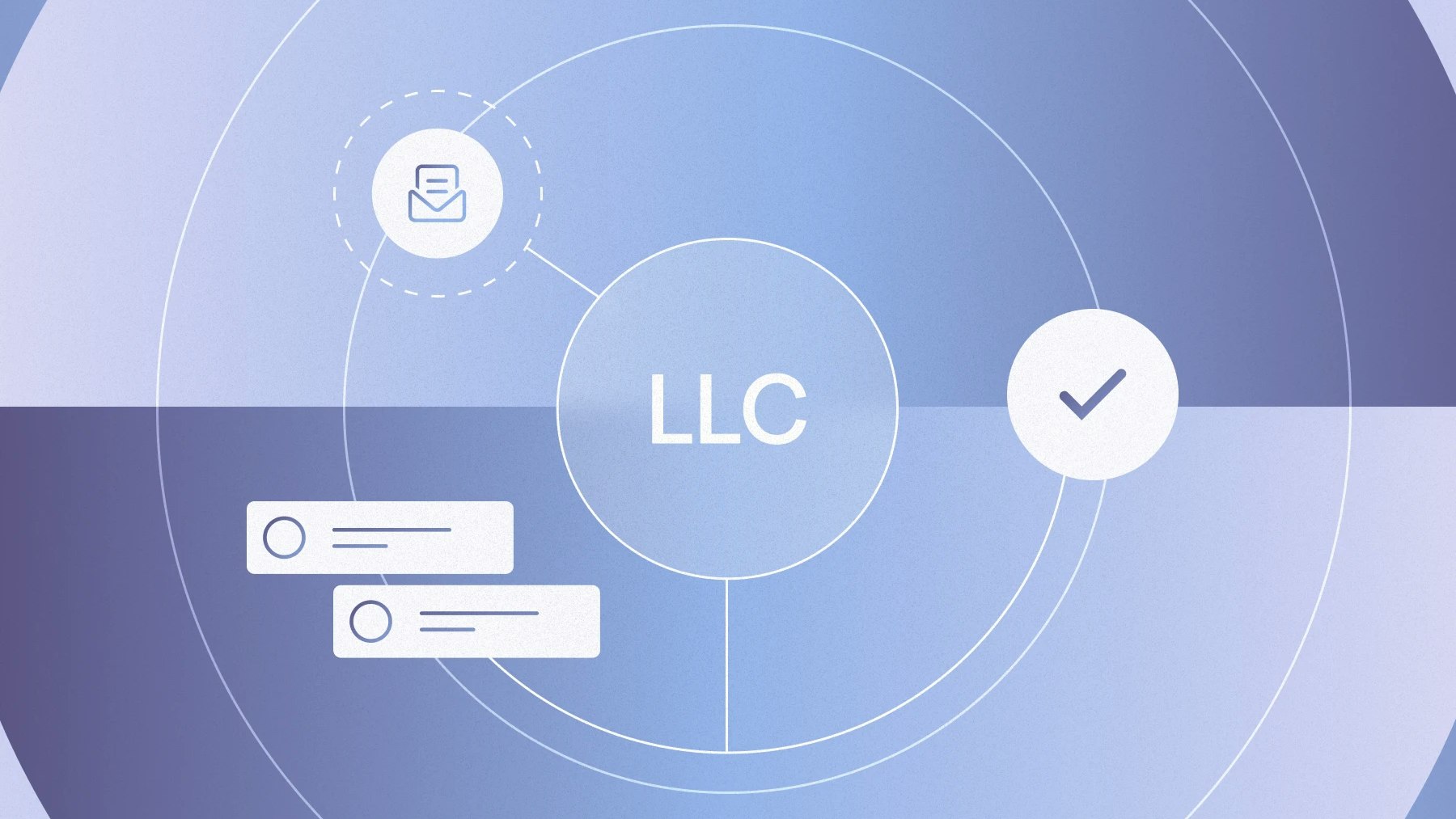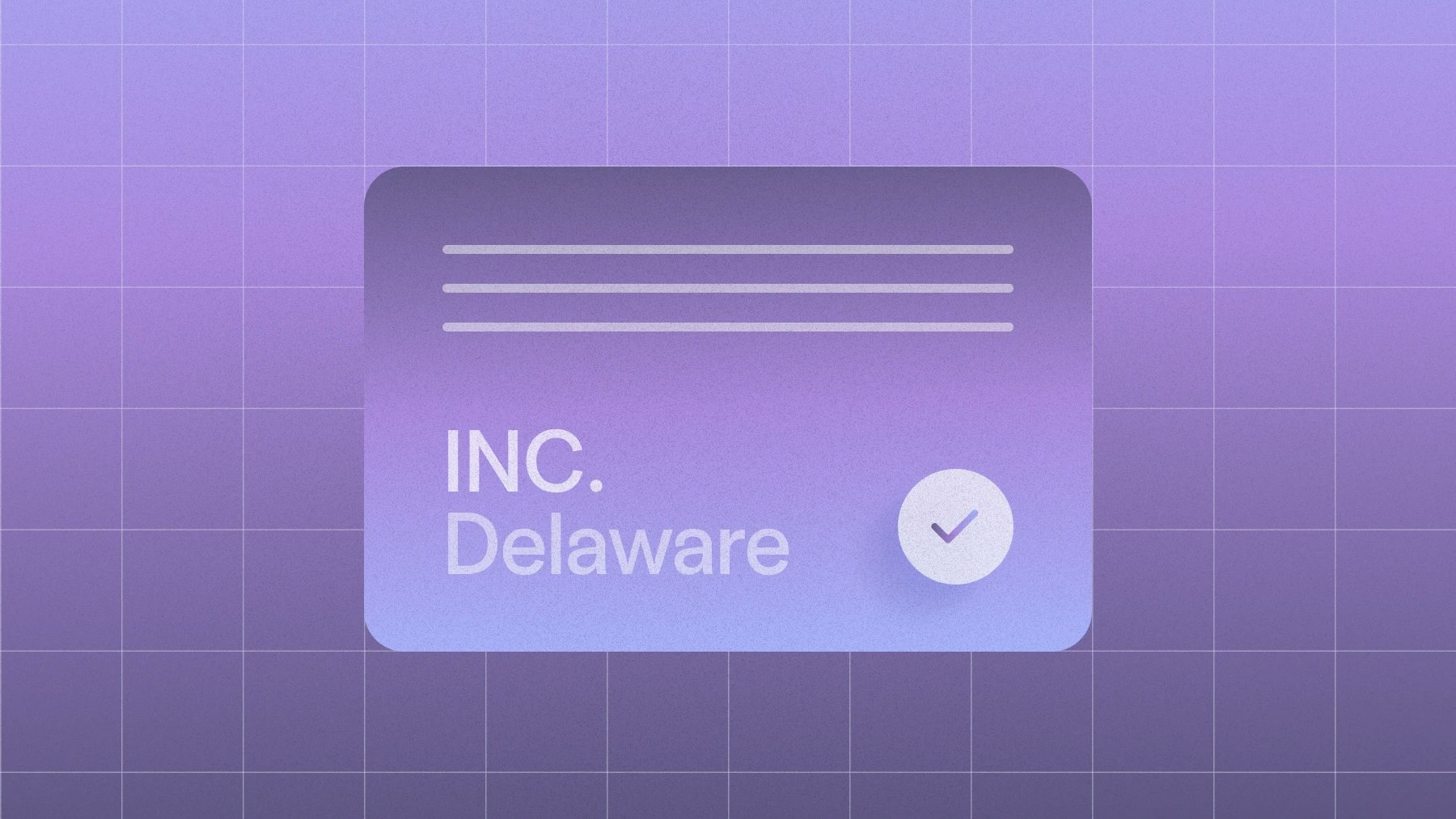How to register your LLC

One of the great things about starting your own business is being in control of many important decisions. As one of your first foundational calls, you'll need to choose the right legal structure. For many founders, forming a Limited Liability Company (LLC) is a sensible starting point. It offers flexibility, protects your personal assets, and sets you up for future growth.
In this guide, we’ll walk through how to register an LLC step by step — from choosing your state to applying for your EIN. Whether you’re launching a tech startup, an ecommerce brand, or a service business, this checklist will help you confidently complete the formation process.
What is an LLC?
An LLC (Limited Liability Company) is a legal business structure that separates your personal and business finances. It’s popular among entrepreneurs because it combines the liability protection of a corporation with the simplicity and flexibility of a sole proprietorship.
You can form an LLC with one or more members, and you don’t need investors or a board of directors to get started. Plus, it’s generally easier to manage and maintain than a full C Corp.
Step 1: Choose your state
You can register your LLC in any U.S. state, but the rules, costs, and requirements vary. Most founders choose to register in the state where they live and operate their business. But in some cases, you may consider forming your LLC in a different state (like Delaware or Wyoming) for tax or legal reasons.
Step 2: Pick a name for your LLC
Your LLC’s name must be unique in your state and meet a few basic legal requirements:
- In most states, it must include “LLC” or “Limited Liability Company”
- It can’t be misleading (e.g., imply you're a government agency)
- It must be distinguishable from existing business names
You can usually check name availability on your state’s Secretary of State website. If your name is available but you’re not ready to file yet, consider reserving it for a small fee.
Common question: What if I want to use a different name? (DBAs)
Even though your LLC must have a legal name that complies with state rules, you can also operate under a different name, called a DBA, or “Doing Business As.”
For example, if your legal LLC name is West Coast Web Design LLC, but you want your branding and website to say Surf’s Up Creative, you’d file a DBA (also called a trade name or fictitious name) with your state or county.
Why use a DBA?
- To create a more marketable or simplified brand name
- To run multiple brands under the same LLC
- To avoid creating a separate LLC for each business line
How to register a DBA:
- Check availability (usually through your state’s business name database)
- File a DBA form with your state or county
- Pay a small fee (typically $10–$100)
- Some states may require public notice (e.g., newspaper publication)
A DBA doesn’t change your legal structure — it’s still the same LLC behind the scenes. But it gives you flexibility in how you present your business to the world.
Step 3: Designate a registered agent
Every LLC needs a registered agent — someone who can receive legal documents and official notices on behalf of your business.
You can be your own agent, but you’ll need to:
- Have a physical address in the state (no P.O. boxes)
- Be available during regular business hours
- Be comfortable with your address appearing on the public record
As a result, many founders opt for professional services. For around $100–$150/year, they’ll handle official mail, forward important documents, and help you stay compliant. This is especially useful if you work remotely or form your LLC in multiple states.
Step 4: File articles of organization
This is the official paperwork that establishes your LLC with the state. It’s sometimes called a “Certificate of Formation” or “Certificate of Organization,” depending on your location.
You’ll typically file online through your state’s business registration portal. Filing fees vary (see the table above), and once approved, your LLC becomes a legal entity.
You’ll need to include:
- LLC name and address
- Registered agent info
- Management structure (member-managed or manager-managed)
- Names of the organizers
Step 5: Create an operating agreement
An Operating Agreement is your LLC’s internal rulebook. It outlines how the business is run, how decisions are made, and what happens if things change, like a member leaving or the company dissolving.
Even if your state doesn’t require it, it’s highly recommended. It helps avoid misunderstandings, protects your limited liability status, and shows that you’re treating the business as a real, separate entity.
What it typically includes:
- Member names, roles, and ownership percentages
- How profits and losses are divided
- Voting rights and decision-making procedures
- What happens if a member exits or the LLC shuts down
You can find templates online to customize for your business. Even single-member LLCs benefit from having one, as it adds legal clarity and credibility.
Step 6: Apply for an EIN (Employer Identification Number)
Think of your EIN as a business equivalent to a Social Security number. You’ll need it to:
- Open a business bank account
- Hire employees
- File business taxes
- Apply for business credit
In many cases, you could choose to use your SSN for some of these tasks, but an EIN keeps everything neatly divided into business and personal and prevents you from having to put your personal social security number on forms. You can get an EIN for free from the IRS — just fill out Form SS-4 on the IRS website.
Learn more about the requirements for an EIN.
Step 7: Register for state and local taxes
Depending on your location and business type, you may need to register for additional tax accounts:
- Sales tax permit (for product-based businesses)
- Employer withholding tax (if you have employees)
- Franchise taxes or excise taxes
- State unemployment insurance
Check with your state’s Department of Revenue or tax authority to see what applies to you.
Step 8: Obtain business licenses and permits
Some businesses require additional licenses or permits at the state, county, or city level. This can vary widely depending on your industry and location.
Examples:
- Health permits (food businesses)
- Contractor licenses (construction/trades)
- Professional licenses (real estate, law, medical)
You can usually find requirements through your local city hall or a state-run small business portal.
Looking for help setting up your business?

Step 9: Stay compliant with ongoing requirements
Registering your LLC is just the beginning. You’ll also need to keep your business in good standing by meeting a few ongoing obligations:
- File annual reports (most states require them)
- Pay renewal fees or franchise taxes
- Maintain a registered agent
- Update the state if your address, ownership, or structure changes
Setting a yearly compliance calendar or hiring a registered agent service can help you stay on top of deadlines.
Optional: Expanding to other states
If your LLC operates in more than one state, you may need to register as a foreign LLC in each additional state.
Each state has its own rules, but the general process includes:
- Submitting a “foreign qualification” application
- Paying a filing fee
- Maintaining a registered agent in that state
This is common for ecommerce businesses, remote-first teams, or startups planning to scale quickly.
Running an ecommerce business? Read on about business structures tailored to your needs.
Types of LLCs
Most LLCs are standard member-managed or manager-managed structures. But depending on your goals, you may also consider:
- Single-member LLCs: One owner; simplest setup
- Multi-member LLCs: Multiple owners; requires more structure
- PLLCs (Professional LLCs): Required in some states for licensed professionals (doctors, lawyers, etc.)
- Series LLCs: Less common, but allows multiple “cells” under one LLC umbrella (used for real estate or venture holdings)
Pros and cons of an LLC
Pros:
- Limited liability protection
- Flexible structure and management
- Pass-through taxation (no double taxation)
- Fewer compliance burdens than corporations
Cons:
- Some states charge high franchise taxes or fees
- Can’t issue shares or raise capital like a corporation
- Not always ideal for VC-backed startups
FAQs
How much does it cost to register an LLC?
Anywhere from $50–$500 depending on your state. You’ll also need to budget for ongoing fees.
How long does it take to register an LLC?
Most states process online filings in 1–2 weeks, but some are faster or slower during peak seasons.
Do I need a registered agent?
Yes — every state requires one. You can be your own, but a professional service may offer better privacy and consistency.
Can I register my LLC at my home address?
Yes, in most states. Just be aware that this address becomes part of the public record.
Should I be my own registered agent?
You can, but make sure you're available during business hours and okay with your address being public.
Can I register multiple LLCs to one address?
Usually, yes, as long as it’s a legal address and each LLC has its own filings.
When will my EIN be issued?
If you apply online through the IRS, you’ll get it immediately after submission.
Where should I register my LLC?
Usually in your home state. Some founders choose Delaware or Wyoming for legal or tax benefits, but it adds complexity.
What do I do after registering?
Open a business bank account, apply for licenses, and start setting up your accounting, taxes, and operations. Congrats, you’re official!
Final thoughts
Forming an LLC doesn’t have to be overwhelming. With the right steps in place, and a clear checklist, you can launch your business with confidence and protect what you’re building.
Once your LLC is registered, tools like Mercury can help you manage your finances from day one, including banking, payments, and team access, all designed for modern startups.



